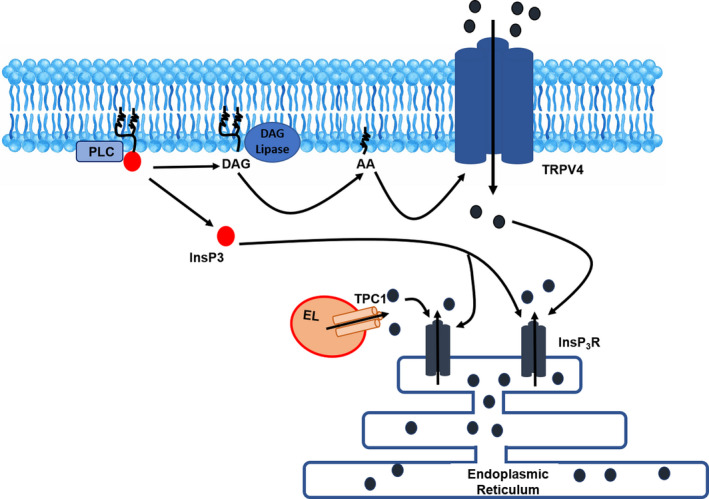FIGURE 7.

The mechanisms leading to the onset of hypoxic human amniotic fluid‐derived stem cell (hAFS) secretome‐induced intracellular Ca2+ oscillations in endothelial colony‐forming cells (ECFCs). Exposure of circulating ECFCs to hypoxic hAFS secretome (hAFS‐CMHypo) results in phospholipase C (PLC) engagement, followed by production of diacylglycerol (DAG) and inositol‐1,4,5‐trisphosphate (InsP3). DAG is converted by DAG lipase into arachidonic acid (AA), which gates transient receptor potential vanilloid 4 (TRPV4) to mediate extracellular Ca2+ entry through the plasma membrane. InsP3 primes ER‐embedded to be activated by the incoming Ca2+. Nicotinic acid adenine dinucleotide phosphate (NAADP)‐induced endolysosomal (EL) Ca2+ release mediated by two‐pore channel 1 (TPC1) is also likely to contribute to the Ca2+‐dependent recruitment of InsP3 receptors (InsP3Rs). Endoplasmic reticulum (ER) Ca2+ depletion, in turn, leads to store‐operated Ca2+ entry (SOCE) activation and maintenance of intracellular Ca2+ oscillations over time (not shown)
